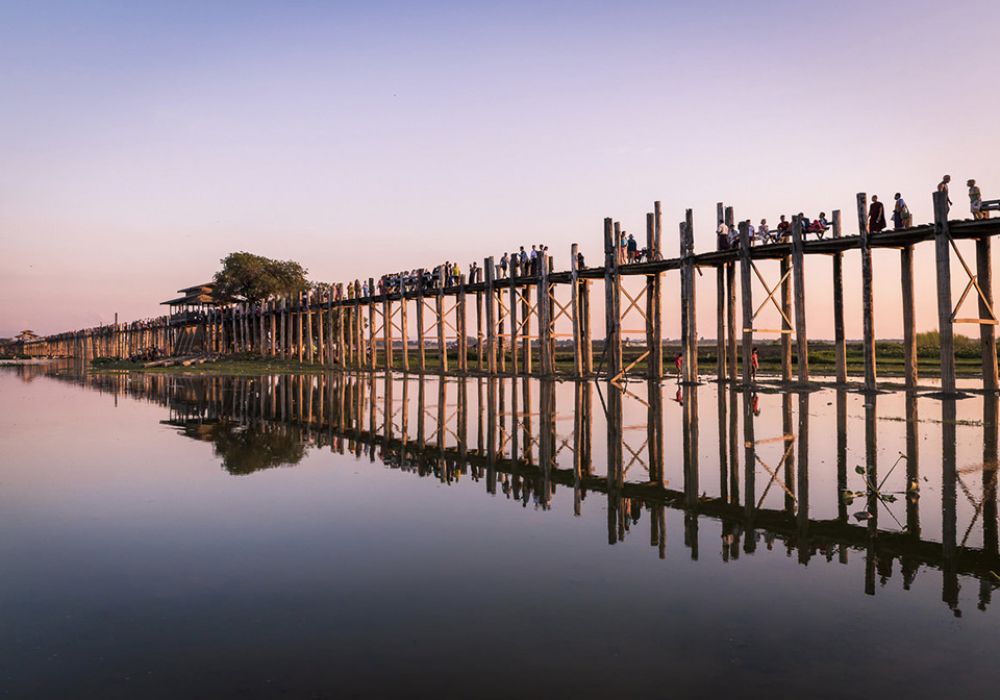

Nestled in the outskirts of Mandalay, the U Bein Bridge has stood as a testament to both architectural prowess and the allure of Myanmar's natural beauty for the past two centuries. Spanning across the shallow Taungthaman Lake, this bridge is renowned for being the oldest and longest teakwood bridge in the world. Its construction dates back to the mid-19th century during the era when Amarapura was the royal capital of Myanmar.
The bridge was named after its chief architect, U Bein, who commissioned the construction using reclaimed teakwood columns from an abandoned palace during the move of the capital to Mandalay. Over the years, the U Bein Bridge has not only been a functional piece of infrastructure but also a significant cultural icon, symbolizing the rich heritage of Myanmar.
The history of tourism at U Bein Bridge is closely linked to the general opening of Myanmar to the international community. For many years, Myanmar remained a secluded gem, with political circumstances limiting the influx of foreign tourists. It was only in the late 20th century that the country started embracing tourism, and significant efforts were made to promote its cultural treasures, among which U Bein Bridge stood out.
As international interest grew, the bridge slowly transitioned from a local passage to a must-visit destination for photographers, nature enthusiasts, and cultural explorers. It became especially famous for offering some of the most picturesque sunsets in Myanmar, drawing travelers from around the world who wanted to witness and capture this enchanting spectacle.
Tourism at U Bein Bridge has ventured beyond mere sightseeing; it now encapsulates a range of experiences including early morning walks, boat rides at dusk, and interactions with the friendly locals. Vendors and monks walking along the bridge add to the vibrant tableau that visitors come to enjoy.
In recent years, there has been a notable shift towards more sustainable and responsible tourism practices in the area surrounding U Bein Bridge. Concerns about the impact of tourism on the environment and the local community have led authorities and tour operators to implement measures that protect the bridge and its surroundings.
Moreover, the experience of visiting U Bein Bridge is being enhanced with the introduction of community-based tourism initiatives that aim to provide authentic encounters with local traditions and ways of life. Rather than just visiting as a spectator, tourists are increasingly engaging in activities that support the local economy and foster a greater appreciation for the culture.
Technological advancements have also influenced tourism trends, with virtual reality experiences and mobile applications providing detailed information on the history and cultural significance of U Bein Bridge, catering to the growing digital-savvy traveler demographic.
Despite the evolving nature of travel and the uncertainties faced by the tourism industry worldwide, U Bein Bridge remains a powerful symbol of Myanmar's enduring allure and a testament to the country's potential as a leading cultural destination.